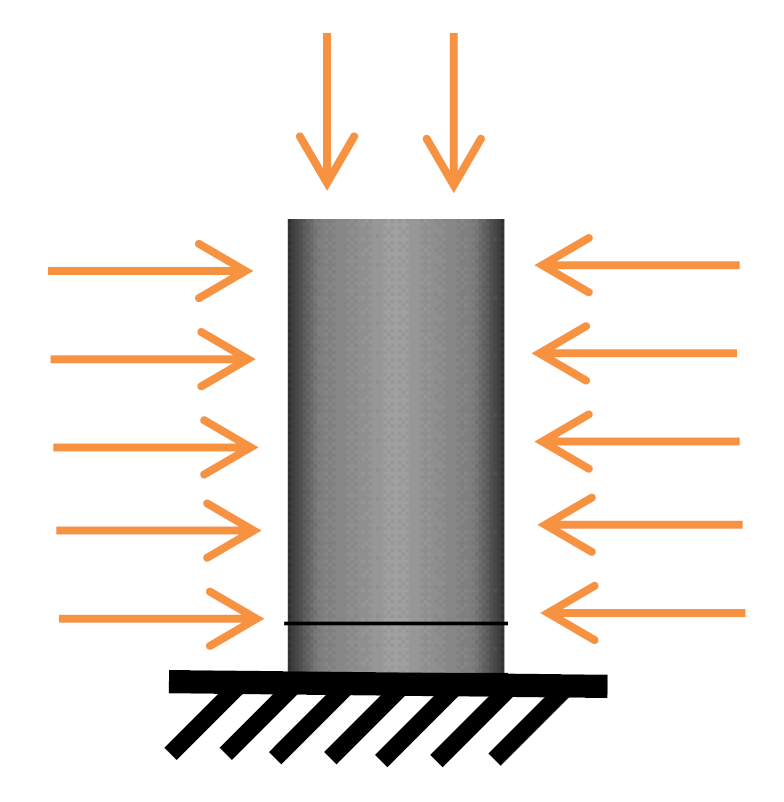According to Popko et al. (2012), there was a wide discussion within OC4 concerning the modelling strategy for buoyancy and its physical correctness. Buoyancy can be accounted for based on the displaced volume method (which estimates the weight of water displaced by submerged elements) or the pressure integration method (which integrates the external pressure acting on the structure, accounting for all pressure forces imposed on individual members). The latter technique, which is used by Flexcom, is considered to provide a more accurate estimation of buoyancy and should be used in the analysis of jackets according to Popko et al.
The jacket structure modelled in OC4 is cut and clamped fixed at the mudline, so there is no upward buoyant force acting on the cross-sectional area of a pile that is in contact with the seabed, as described in Clauss et al. (2014). Hence Popko advises that no upward pressure should be included in the model at this point.

Pressure Forces acting on Pile (Popko et al., 2012)
There are two distinct groupings in terms of the vertical force acting at the mudline. The project participants which omitted the buoyancy force at the mudline predict a vertical force at about -16600 kN, while others (including Flexcom) which included this term predict a vertical force of about -15800 kN. In Bladed V4.0, an additional pressure force applied on the top of the grouted piles led to a force of about -17150 kN. For SWE/Flex5-Poseidon, buoyancy of legs was ignored, so pressure integration was only applied on the surface of sealed braces, leading to a force of about -17100 kN. Flexcom applies a pressure force at the mudline based on the local cross-sectional area of each jacket leg, apparently contradicting advice from the OC4 coordinators. However, because the pressure force is applied at restrained nodes, it has no effect on the tension in the jacket legs or on the overall structural response. Hence Flexcom’s structural model remains accurate, and any discrepancy in reaction forces is simply due to the computational method adopted for this parameter alone.
